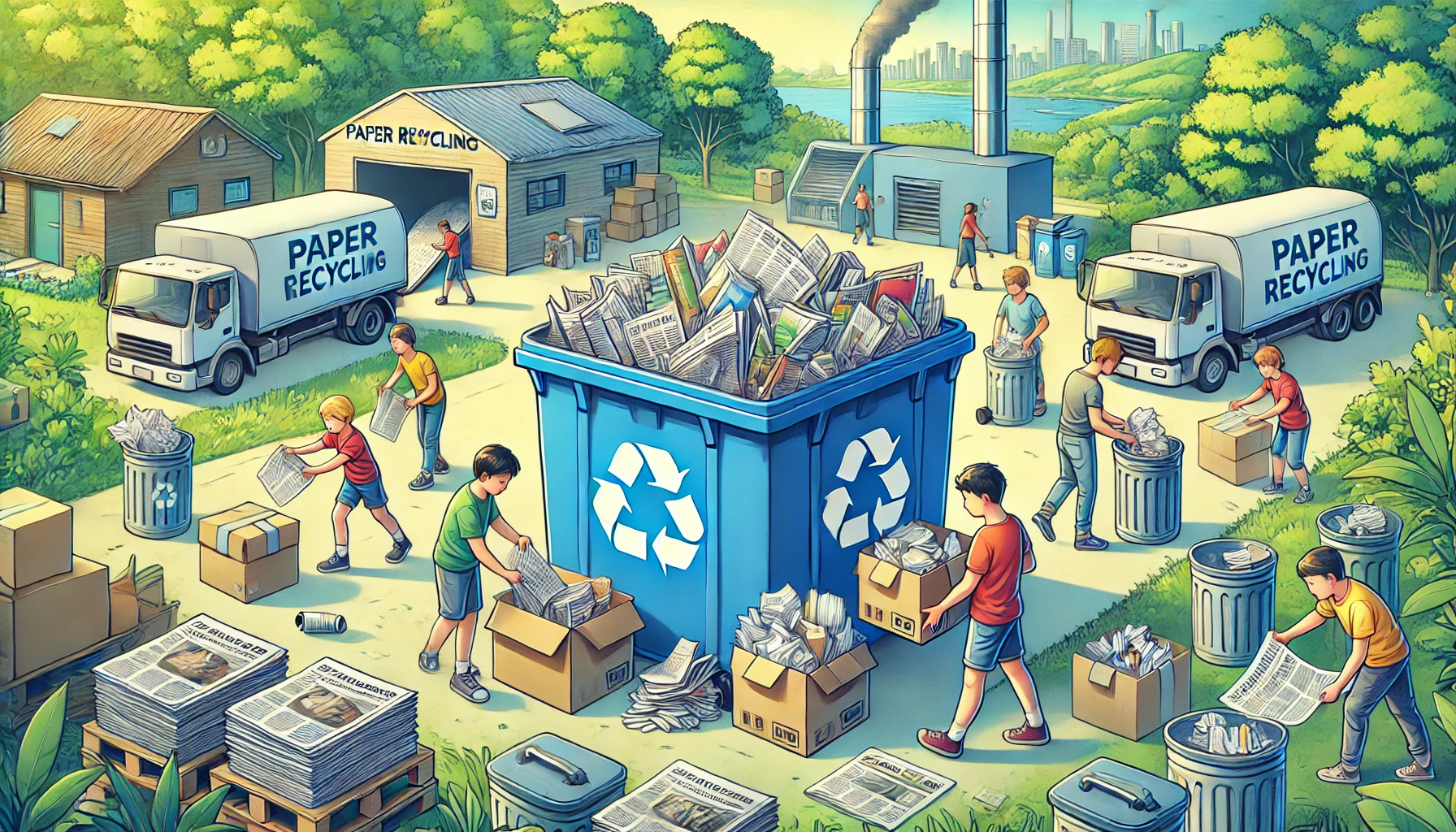Paper is the only material that, after a thousand turns in the bin, still manages to reinvent itself as a novel or an elegant napkin.
The life cycle of paper
Paper production is an intensive process, requiring large amounts of water and energy. However, the use of renewable sources and wastewater treatment are tackling the daunting task of making paper mills more sustainable.
Paper from natural forests or industrial plantations can be produced in a more sustainable and controlled way thanks to different supply chain certifications.
Reforestation compensates for tree felling, but deforestation remains a critical problem in some areas due to mismanagement.
To reduce environmental impact, alternative materials such as hemp, bamboo, agricultural waste and herbivore faeces are gaining ground, requiring fewer resources than wood.
Recycled paper is also increasingly used, limiting the need for virgin raw materials. This material is used in various fields, including food packaging, publishing and domestic or professional uses.
At the end of its life, paper can be recycled, composted or incinerated. Recycling remains the best solution, from which new products are derived, even if the quality of the fibres is reduced with each cycle.
Composting is suitable for untreated paper, while incineration generates CO2 emissions, making it less preferable to the other options.
Recycling Process
Paper recycling starts with the separation and sorting phase, during which citizens and businesses, thanks to separate collection, have a primary role in distinguishing this material from other waste.
This initial phase is crucial, as the quality of the harvest depends on the care with which it is carried out.
Once collected, it is sent to sorting centres. In these facilities, advanced machinery and experienced operators sort it according to type, such as cardboard, office or coated paper.
Subsequently, the sorted material is pressed into compact bales, reducing the volume to simplify transport to recycling plants, thereby optimising logistics costs and limiting CO2 emissions.
Once in the plants, the paper is mixed with hot water to be transformed into a pulp, which is obtained by disintegrating the original fibres.
This paste then undergoes a ‘deinking‘ treatment to remove inks, adhesives and other impurities.
Finally, the pulp is refined, dried and compressed into new sheets ready for use in a variety of products, such as packaging and stationery.
Recycling, impacts and benefits
In Italy, the separate collection of paper and cardboard reached a record of over 3.7 million tonnes in 2023.
This avoided the extraction and use of approximately 11.7 million tonnes of virgin raw material, an amount comparable to the weight of 800 Towers of Pisa.
This helped reduce greenhouse gas emissions, avoiding the release of more than 10 million tonnes of CO2 equivalent into the atmosphere, equivalent to the emissions generated by more than 8,000 flights around the world.
The environmental benefits of paper recycling are considerable: just one tonne of recycled paper can save around 17 trees and save up to 26,500 litres of water.
Moreover, the production of recycled paper emits less greenhouse gases than virgin paper, thus contributing to climate change mitigation.
This process fits perfectly into the circular economy model, promoting the reuse of materials and significantly reducing dependence on virgin resources.
This not only helps to preserve forests, avoiding intensive logging, but also to minimise conflicts related to the hoarding of natural resources.
Recycling, therefore, is not only an act of environmental sustainability, but also a step towards a fairer and more responsible management of global resources.
Play for the planet!
